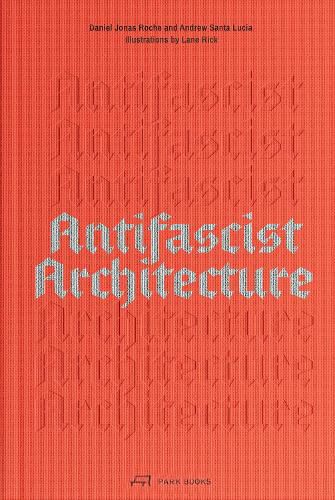Readings Newsletter
Become a Readings Member to make your shopping experience even easier.
Sign in or sign up for free!
You’re not far away from qualifying for FREE standard shipping within Australia
You’ve qualified for FREE standard shipping within Australia
The cart is loading…






Invents and defines a new category of groundbreaking architecture. Architects, historians, and theorists have had a weird obsession with fascist architecture since postmodernism. Why? And who are the antifascist architects? What does antifascist architecture look like? Antifascist Architecture is the first attempt at creating a working definition of antifascist architecture after academia has spent decades fetishising fascist architecture. Brilliant scholarship has of course been presented about anti-colonial architecture, liberation architecture, and so forth. Yet antifascist architecture is an avenue that remains to be explored. This book does just that, offering a kaleidoscopic, peripatetic bricolage of architects who heroically aligned themselves with antifascist struggles, buildings made in the name of anti-fascism, and a call to arms for antifascist utopian futures. It is written for students and practitioners of architecture, but also activists and scholars in the social sciences who are interested in antifascist history, theory, and practice. AUTHORS: Andrew Santa Lucia is an associate professor of practice at Portland State University School of Architecture and the founder of the design firm Office Andorus in Portland, Oregon. Daniel Jonas Roche is a New York-based journalist and author, and the news editor of The Architect's Newspaper. SELLING POINTS: . Explores for the first time the phenomenon of antifascist architecture in distinction from anti-colonial or liberation architecture . Offers the first working definition of antifascist architecture . Conveys a concrete vision of how anti-fascism manifests itself in practice and what form it can take in the built environment . Written for anyone interested in architecture and antifascist history, theory, and practice 40 colour, 45 b/w illustrations
$9.00 standard shipping within Australia
FREE standard shipping within Australia for orders over $100.00
Express & International shipping calculated at checkout
Invents and defines a new category of groundbreaking architecture. Architects, historians, and theorists have had a weird obsession with fascist architecture since postmodernism. Why? And who are the antifascist architects? What does antifascist architecture look like? Antifascist Architecture is the first attempt at creating a working definition of antifascist architecture after academia has spent decades fetishising fascist architecture. Brilliant scholarship has of course been presented about anti-colonial architecture, liberation architecture, and so forth. Yet antifascist architecture is an avenue that remains to be explored. This book does just that, offering a kaleidoscopic, peripatetic bricolage of architects who heroically aligned themselves with antifascist struggles, buildings made in the name of anti-fascism, and a call to arms for antifascist utopian futures. It is written for students and practitioners of architecture, but also activists and scholars in the social sciences who are interested in antifascist history, theory, and practice. AUTHORS: Andrew Santa Lucia is an associate professor of practice at Portland State University School of Architecture and the founder of the design firm Office Andorus in Portland, Oregon. Daniel Jonas Roche is a New York-based journalist and author, and the news editor of The Architect's Newspaper. SELLING POINTS: . Explores for the first time the phenomenon of antifascist architecture in distinction from anti-colonial or liberation architecture . Offers the first working definition of antifascist architecture . Conveys a concrete vision of how anti-fascism manifests itself in practice and what form it can take in the built environment . Written for anyone interested in architecture and antifascist history, theory, and practice 40 colour, 45 b/w illustrations